Bronchitis vs uri. Bronchitis vs. URI: Understanding the Key Differences Between Lower and Upper Respiratory Infections
What are the main distinctions between bronchitis and upper respiratory infections. How do symptoms, causes, and treatments differ for these common respiratory conditions. When should you seek medical attention for persistent respiratory symptoms.
The Fundamental Differences Between Bronchitis and URIs
Respiratory infections can be confusing, especially with the myriad of medical terms used to describe them. Two common conditions that often cause confusion are bronchitis and upper respiratory infections (URIs). While both affect the respiratory system, they target different areas and have distinct characteristics.
Bronchitis is an inflammation of the bronchial tubes in the lungs, making it a lower respiratory tract infection. On the other hand, URIs affect the upper parts of the respiratory system, including the nose, sinuses, and throat. Understanding these fundamental differences is crucial for proper diagnosis and treatment.

Bronchitis: A Closer Look at This Lower Respiratory Infection
Bronchitis occurs when the bronchioles, the air-transporting tubes in the lungs, become inflamed and produce excessive mucus. This condition is classified as a lower respiratory infection because it affects structures below the voice box (larynx).
Types of Bronchitis
- Acute bronchitis: A short-term infection typically lasting 10-14 days
- Chronic bronchitis: A long-term condition classified under chronic obstructive pulmonary disease (COPD)
Acute bronchitis is usually caused by viruses, although bacteria can also be culprits. Chronic bronchitis, on the other hand, is often associated with long-term exposure to irritants, primarily tobacco smoke.
Common Symptoms of Bronchitis
- Persistent cough, often with mucus
- Wheezing when coughing
- Fatigue
- Chest soreness
- Sore throat
- Headache
- Mild body aches or fever
Is bronchitis contagious? Acute bronchitis can be contagious, especially during the first few days of the infection. However, chronic bronchitis is not typically considered contagious as it’s primarily caused by long-term irritant exposure rather than infectious agents.

Upper Respiratory Infections: Exploring the Diversity of URIs
Upper respiratory infections encompass a wide range of conditions affecting the upper parts of the respiratory system. These infections are incredibly common and account for a significant portion of doctor visits in the United States.
Types of Upper Respiratory Infections
- Common cold
- Sinusitis (sinus infection)
- Laryngitis
- Tonsillitis
- Epiglottitis
URIs are typically caused by viruses or bacteria that spread through respiratory droplets or physical contact. The common cold, for instance, is responsible for most routine doctor visits in the United States.
Typical Symptoms of Upper Respiratory Infections
- Sore throat
- Cough
- Nasal congestion or runny nose
- Post-nasal drip
- Sneezing
- Fatigue
- Headache
How long do upper respiratory infections typically last? Most URIs resolve within two weeks, although conditions like sinusitis may persist longer. If symptoms worsen or don’t improve after two weeks, it’s advisable to consult a healthcare professional.
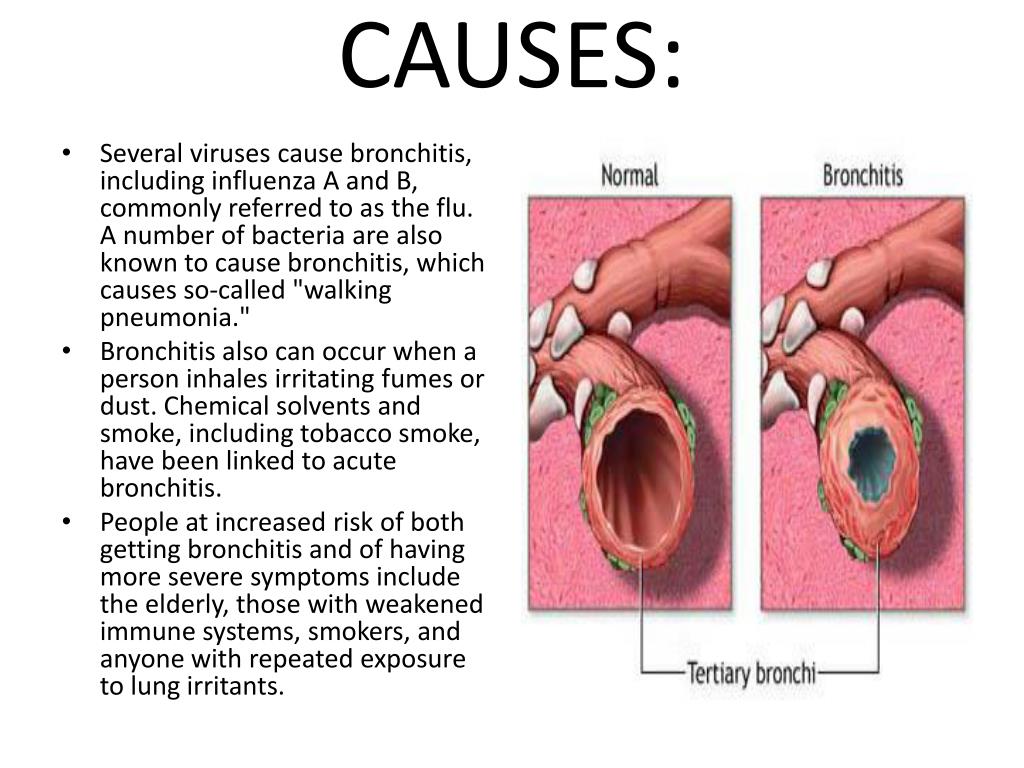
Treatment Approaches: Managing Bronchitis and URIs
Despite their differences, bronchitis and URIs often share similar treatment approaches, focusing on symptom management and supporting the body’s natural healing processes.
Home Remedies and Self-Care
- Rest: Allowing the body to focus energy on fighting the infection
- Hydration: Drinking plenty of fluids to thin mucus and soothe the throat
- Over-the-counter medications: Using pain relievers, decongestants, or cough suppressants as needed
- Humidifiers: Adding moisture to the air to ease breathing and reduce coughing
Do antibiotics help with bronchitis or URIs? In most cases, antibiotics are not recommended for either condition as they are typically caused by viruses. However, if a bacterial infection is suspected, particularly in cases of bacterial bronchitis or certain types of sinusitis, a healthcare provider may prescribe antibiotics.
When to Seek Medical Attention for Respiratory Symptoms
While most cases of bronchitis and URIs can be managed at home, certain situations warrant professional medical evaluation.

Red Flags for Bronchitis
- Symptoms persisting or worsening after three weeks
- Difficulty breathing or shortness of breath
- High fever (above 100.4째F or 38째C) lasting more than a few days
- Coughing up blood or rust-colored sputum
Warning Signs for URIs
- Symptoms worsening after initial improvement
- Severe sinus pain or persistent sore throat
- Low-grade fever lasting more than five days
- Fever higher than 101.3째F (38.5째C) in adults
Should you visit an urgent care center for persistent respiratory symptoms? While urgent care can be an option, especially for after-hours care, many patients now prefer in-home medical services for the treatment of common respiratory infections. These services offer the convenience of professional care without the need to leave home, reducing the risk of spreading infections to others.
The Impact of COVID-19 on Respiratory Infection Diagnosis
The COVID-19 pandemic has added a layer of complexity to the diagnosis and management of respiratory infections. Unlike typical URIs or bronchitis, COVID-19 can affect both the upper and lower respiratory tracts, often starting in the upper respiratory system before potentially spreading to the lungs.
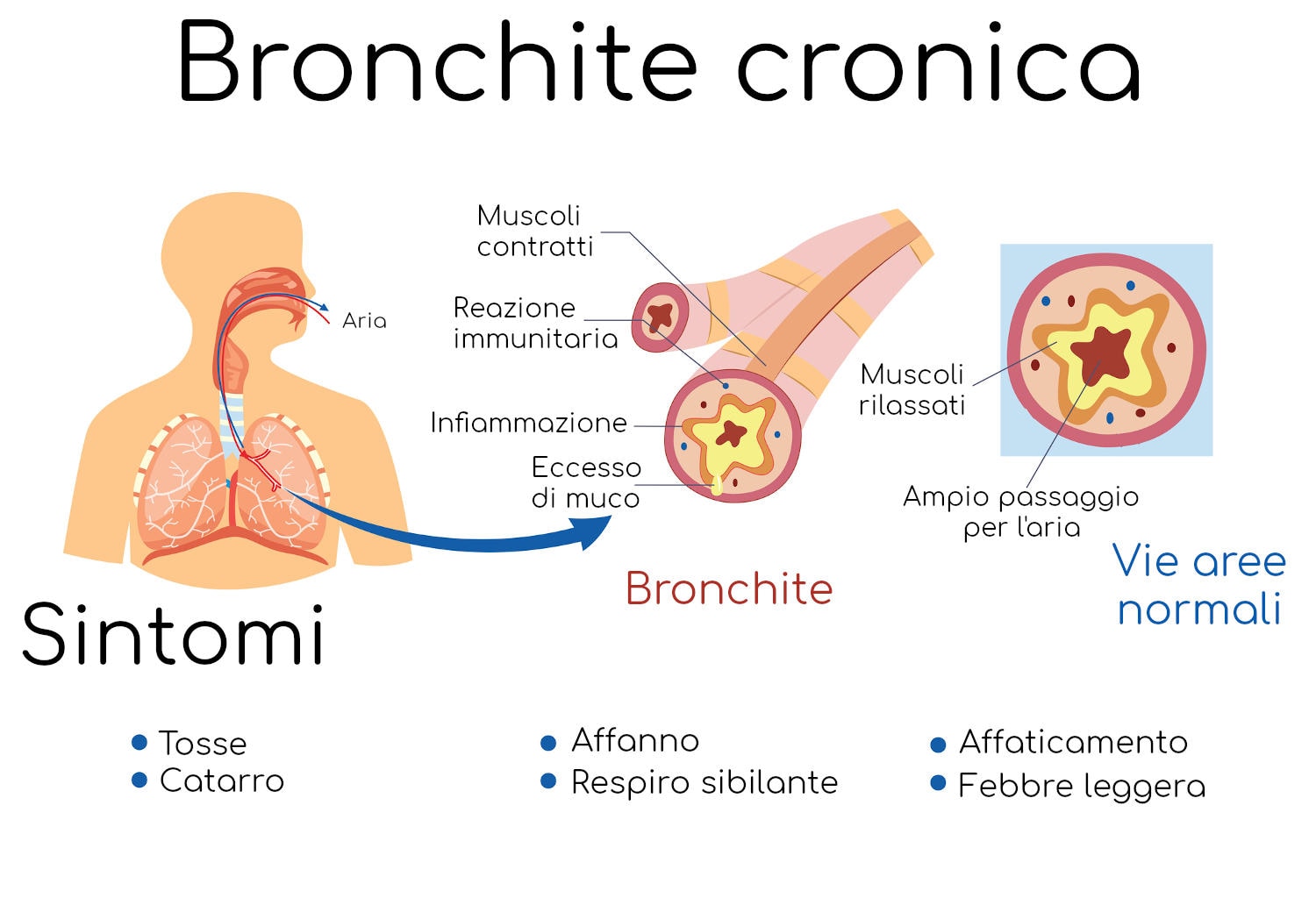
Distinguishing COVID-19 from Other Respiratory Infections
- Symptom onset: COVID-19 symptoms often develop more gradually than those of a common cold or flu
- Loss of taste or smell: A distinctive symptom more common in COVID-19 than in other respiratory infections
- Severity of symptoms: COVID-19 can lead to more severe symptoms and complications, particularly in high-risk individuals
How has COVID-19 changed the approach to diagnosing respiratory infections? The pandemic has emphasized the importance of testing and has led to more cautious approaches in diagnosing and treating respiratory symptoms. Healthcare providers now often consider COVID-19 as a possibility when evaluating patients with respiratory complaints, especially if there’s known exposure or community spread.
Prevention Strategies for Respiratory Infections
While it’s not always possible to prevent respiratory infections entirely, several strategies can reduce the risk of contracting or spreading these conditions.

General Prevention Tips
- Hand hygiene: Frequent handwashing with soap and water or using alcohol-based hand sanitizers
- Respiratory etiquette: Covering the mouth and nose when coughing or sneezing
- Avoiding close contact with sick individuals
- Maintaining a healthy lifestyle: Getting adequate sleep, eating a balanced diet, and exercising regularly to support immune function
Specific Prevention for Bronchitis
- Avoiding tobacco smoke and other airborne irritants
- Getting vaccinated against influenza and pneumococcal disease, which can lead to secondary bronchitis
- Using personal protective equipment in occupational settings with high exposure to irritants
Can masks help prevent respiratory infections? Wearing masks, particularly in crowded or indoor settings, can help reduce the spread of respiratory infections, including COVID-19, influenza, and the common cold. This practice has become more widely accepted and implemented since the onset of the COVID-19 pandemic.
The Role of Telemedicine in Respiratory Infection Care
The rise of telemedicine has revolutionized the way respiratory infections are diagnosed and managed, offering patients convenient access to healthcare without the need to visit a clinic or hospital.
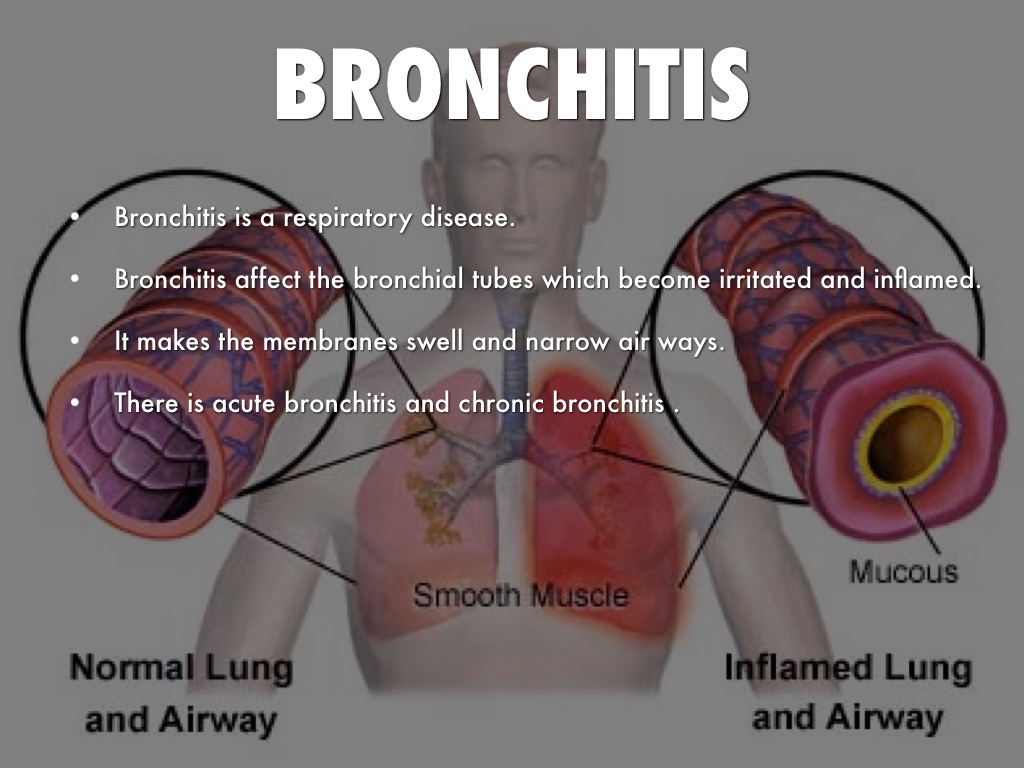
Benefits of Telemedicine for Respiratory Infections
- Reduced risk of transmission: Patients can receive care without exposing others to their illness
- Convenience: Consultations can be conducted from the comfort of home
- Accessibility: Increased access to healthcare for those in remote areas or with mobility issues
- Efficiency: Often results in quicker diagnoses and treatment recommendations
How effective is telemedicine in diagnosing respiratory infections? While telemedicine has proven effective for initial assessments and follow-ups for many respiratory conditions, some cases may still require in-person evaluations or diagnostic tests. Healthcare providers use a combination of patient history, reported symptoms, and visual assessments to make preliminary diagnoses and treatment recommendations via telemedicine platforms.
The landscape of respiratory infection care continues to evolve, with advancements in telemedicine, home-based care services, and diagnostic technologies. As our understanding of these conditions grows and healthcare delivery models adapt, patients have more options than ever for managing bronchitis, URIs, and other respiratory ailments. By staying informed about the distinctions between these conditions and knowing when to seek medical attention, individuals can ensure they receive appropriate care and minimize the impact of respiratory infections on their daily lives.

Bronchitis vs. Upper Respiratory Infections
Do you know the difference between bronchitis and an upper respiratory tract infection (URI)? With all the medical jargon and complex terminology out there, it’s easy to get mixed up about these common respiratory conditions—and the arrival of
COVID-19 certainly hasn’t helped to simplify things. To help clear up the confusion, let’s take a closer look at bronchitis, upper respiratory tract infections, and what sets them apart.
[availability_widget]
The Basics of Bronchitis
Bronchitis (chest cold) is not an upper respiratory tract infection. Rather, it affects the air-transporting tubes of the lungs (bronchioles), which are a part of the lower respiratory tract. So, bronchitis is considered a lower respiratory infection—or an infection that impacts the lungs or structures below the voice box (larynx). Other lower respiratory tract infections include pneumonia, tuberculosis, and bronchiolitis.
Acute (short-term) bronchitis occurs when the bronchioles become inflamed and produce too much mucus. It is usually caused by a virus, although bacteria may also lead to bronchitis. Some of the most common symptoms of acute bronchitis include:
It is usually caused by a virus, although bacteria may also lead to bronchitis. Some of the most common symptoms of acute bronchitis include:
- Frequent coughing, with or without mucus
- A wheezing noise when coughing
- Fatigue
- Chest soreness, especially when coughing
- Sore throat
- Headache
- Mild body aches or fever
Symptoms of acute bronchitis typically last for 10 to 14 days, although some symptoms may linger for up to three weeks.
Treatment for acute bronchitis often involves plenty of rest, fluids, and over-the-counter medications to help control symptoms. Bacterial bronchitis may be treated with antibiotics. It’s also important to avoid smoking and exposure to airborne irritants while recovering from bronchitis. Individuals with symptoms that remain or worsen after three weeks should be evaluated by a medical professional.
While acute bronchitis is a contagious short-term infection, chronic bronchitis is a long-term condition that falls under the chronic obstructive pulmonary disease (COPD) umbrella. It is caused by smoking tobacco in most cases, although long-term exposure to air pollution, certain chemicals, and secondhand smoke may also contribute to chronic bronchitis.
It is caused by smoking tobacco in most cases, although long-term exposure to air pollution, certain chemicals, and secondhand smoke may also contribute to chronic bronchitis.
Understanding Upper Respiratory Tract Infections
As you may have guessed, upper respiratory tract infections (URIs) are infections that impact the upper respiratory tract, which includes the nose, mouth, throat, and voice box.
Types of upper respiratory infections include:
- The common cold
- Sinusitis (sinus infection)
- Laryngitis
- Tonsillitis
- Epiglottitis
Influenza (flu) and
COVID-19 can impact both the lower and upper respiratory tracts, although COVID-19 typically begins in the upper respiratory tract and may spread to the lower.
Upper respiratory tract infections are caused by several types of viruses and bacteria that can travel through respiratory droplets or physical contact. These infections are incredibly widespread—in fact, the common cold is to blame for most routine doctor visits in the United States.
The signs of a upper respiratory tract infection will vary based on what type of condition is present, but a few hallmark URI symptoms include:
- Sore throat
- Cough
- Nasal congestion or runny nose
- Post-nasal drip
- Sneezing
- Fatigue
- Headache
Similar to lower respiratory infections, most upper respiratory tract infections can be treated at home by getting plenty of rest, drinking lots of water, and taking over-the-counter medications to reduce symptoms. Most infections resolve on their own within two weeks, although sinusitis may last longer. Individuals should consult with a medical professional if symptoms:
- Worsen or do not improve with self-care methods
- Go away and then return
- Include sinus pain or a severe sore throat
- Include a low-grade fever that persists for more than five days
- Include a fever higher than 101.3 degrees fahrenheit (for adults)
In-Home Treatment for Bronchitis, URIs & Other Common Illnesses
No matter if you’re battling bronchitis, the common cold, or any other type of respiratory infection, you’re probably not in the mood to trek to an urgent care center or physician’s office and sit in a bustling, germ-filled waiting room. Enter: DispatchHealth. Our fully equipped medical teams offer safe, convenient, and affordable medical care to patients in the comfort of their own home.
Enter: DispatchHealth. Our fully equipped medical teams offer safe, convenient, and affordable medical care to patients in the comfort of their own home.
Ready to find relief from bothersome respiratory symptoms? If so, request a same-day visit from DispatchHealth by giving us a call, going on our website, or using our app. Our team is here to answer any questions you may have.
Sources
DispatchHealth relies only on authoritative sources, including medical associations, research institutions, and peer-reviewed medical studies.
Sources referenced in this article:
- https://www.healthline.com/health/acute-upper-respiratory-infection
- https://my.clevelandclinic.org/health/diseases/3993-bronchitis
- https://www.cdc.gov/antibiotic-use/community/for-patients/common-illnesses/bronchitis.html
- https://www.medicalnewstoday.com/articles/324413
- https://www.mayoclinic.org/diseases-conditions/common-cold/symptoms-causes/syc-20351605
Upper Respiratory Infections and Acute Bronchitis
1. Gwaltney JM, Jr, Hendley JO, Simon G, et al. Rhinovirus infections in an industrial population. II. Characteristics of illness and antibody response. JAMA. 1967;202:494. doi: 10.1001/jama.202.6.494. [PubMed] [CrossRef] [Google Scholar]
Gwaltney JM, Jr, Hendley JO, Simon G, et al. Rhinovirus infections in an industrial population. II. Characteristics of illness and antibody response. JAMA. 1967;202:494. doi: 10.1001/jama.202.6.494. [PubMed] [CrossRef] [Google Scholar]
2. Gohd RS. The common cold. N Engl J Med. 1954;250:687–691. doi: 10.1056/NEJM195404222501606. [PubMed] [CrossRef] [Google Scholar]
3. Schappert SM. National Ambulatory Medical Care Survey: 1991 Summary. Vital Health Stat 13(116) Hyattsville, MD: National Center for Health Statistics; 1994. [PubMed] [Google Scholar]
4. Hing E, Cherry DK, Woodwell DA. National Ambulatory Medical Care Survey: 2003 Summary. Advance Data from Vital and Health Statistics, no. 365. Hyattsville, MD: National Center for Health Statistics; 2005. [Google Scholar]
5. Croughan-Minihane MS, Petitti DB, Rodnick JE, Eliaser G. Clinical trial examining effectiveness of three cough syrups. J Am Board Fam Pract. 1993;6:109–115. [PubMed] [Google Scholar]
6.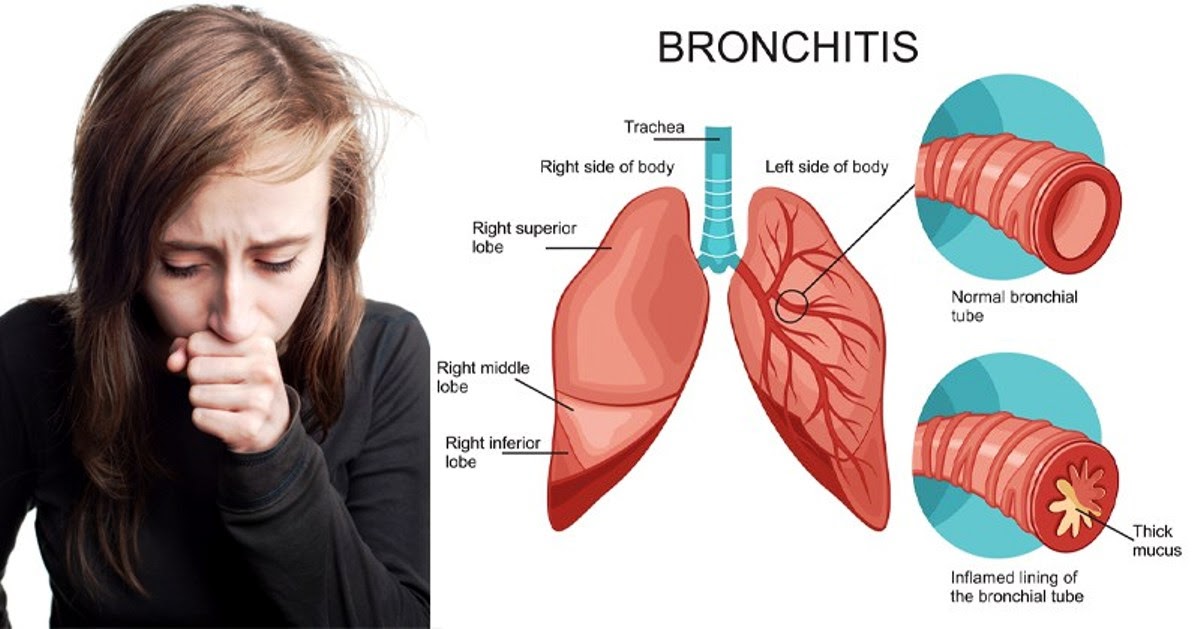 Sperber SJ, Levine PA, Sorrentino JV, Riker DK, et al. Ineffectiveness of recombinant interferon-beta serine nasal drops for prophylaxis of natural colds. J Infect Dis. 1989;160:700–705. doi: 10.1093/infdis/160.4.700. [PMC free article] [PubMed] [CrossRef] [Google Scholar]
Sperber SJ, Levine PA, Sorrentino JV, Riker DK, et al. Ineffectiveness of recombinant interferon-beta serine nasal drops for prophylaxis of natural colds. J Infect Dis. 1989;160:700–705. doi: 10.1093/infdis/160.4.700. [PMC free article] [PubMed] [CrossRef] [Google Scholar]
7. Cherry DK, Woodwell DA, Rechtsteiner EA. National Ambulatory Medical Care Survey: 2005 Summary. Advance Data from Vital and Health Statistics, no. 387. Hyattsville, MD: National Center for Health Statistics; 2007. [PubMed] [Google Scholar]
8. Carroll K, Reimer L. Microbiology and laboratory diagnosis of upper respiratory tract infections. Clin Infect Dis. 1996;23:442–448. doi: 10.1093/clinids/23.3.442. [PubMed] [CrossRef] [Google Scholar]
9. Fendrick AM, Monto AS, Nightengale B, Sarnes M. The economic burden of non-influenza-related viral respiratory tract infection in the United States. Arch Intern Med. 2003;163:487–494. doi: 10.1001/archinte.163.4.487. [PubMed] [CrossRef] [Google Scholar]
10. Committee on Infectious Diseases . Report of the Committee of Infectious Diseases. 23. Elk Grove, IL: American Academy of Pediatrics; 1994. [Google Scholar]
Committee on Infectious Diseases . Report of the Committee of Infectious Diseases. 23. Elk Grove, IL: American Academy of Pediatrics; 1994. [Google Scholar]
11. Centers for Disease Control and Prevention General recommendations on immunization: Recommendations of the Advisory Committee on Immunization Practices (ACIP) MMWR. 1994;43:1–38. [PubMed] [Google Scholar]
12. Holt E, Guyer B, Hughart N, et al. The contribution of missed opportunities to childhood underimmunization in Baltimore. Pediatrics. 1996;97:474–480. [PubMed] [Google Scholar]
13. Sattar SA, Jacobsen H, Springthorpe VS, et al. Chemical disinfection to interrupt transfer of rhinovirus type 14 from environmental surfaces to hands. Appl Environ Microbiol. 1993;59:1579–1585. [PMC free article] [PubMed] [Google Scholar]
14. Ansari SA, Springthorpe VS, Sattar SA, et al. Potential role of hands in the spread of respiratory viral infections: Studies with human parainfluenza virus 3 and rhinovirus 14. J Clin Microbiol. 1991;29:2115–2119. [PMC free article] [PubMed] [Google Scholar]
1991;29:2115–2119. [PMC free article] [PubMed] [Google Scholar]
15. Warshauer DM, Dick EC, Mandel AD, et al. Rhinovirus infections in an isolated antarctic station. Transmission of the viruses and susceptibility of the population. Am J Epidemiol. 1989;129:319–340. [PubMed] [Google Scholar]
16. Jackson GG, Muldoon RL. Viruses causing common respiratory infections in man. J Infect Dis. 1973;127:328–355. doi: 10.1093/infdis/127.3.328. [PubMed] [CrossRef] [Google Scholar]
17. Makela MJ, Puhakka T, Ruuskanen O, et al. Viruses and bacteria in the etiology of the common cold. J Clin Microbiol. 1998;36:539–542. [PMC free article] [PubMed] [Google Scholar]
18. Mainous AGIII, Hueston WJ, Clark JR. Antibiotics and upper respiratory infection: Do some folks think there is a cure for the common cold? J Fam Pract. 1996;42:357–361. [PubMed] [Google Scholar]
19. Gonzales R, Steiner JF, Sande MA. Antibiotic prescribing for adults with colds, upper respiratory tract infections, and bronchitis by ambulatory care physicians. JAMA. 1997;278:901–904. doi: 10.1001/jama.278.11.901. [PubMed] [CrossRef] [Google Scholar]
JAMA. 1997;278:901–904. doi: 10.1001/jama.278.11.901. [PubMed] [CrossRef] [Google Scholar]
20. Vanderweil SG, Pelletier AJ, Hamedani AG, et al. Declining antibiotic prescriptions for upper respiratory infections, 1993–2004. Acad Emerg Med. 2007;14:366–369. [PubMed] [Google Scholar]
21. Hardy LM, Traisman HS. Antibiotics and chemotherapeutic agents in the treatment of uncomplicated respiratory infections in children. J Pediatr. 1956;48:146–156. doi: 10.1016/S0022-3476(56)80160-1. [PubMed] [CrossRef] [Google Scholar]
22. Lexomboon U, Duangmani C, Kusalasai V, et al. Evaluation of orally administered antibiotics for treatment of upper respiratory infections in Thai children. J Pediatr. 1971;78:772–778. doi: 10.1016/S0022-3476(71)80347-5. [PubMed] [CrossRef] [Google Scholar]
23. Taylor B, Abbott GD, Kerr MM, et al. Amoxycillin and co-trimoxazole in presumed viral respiratory infections of childhood: Placebo-controlled trial. Br Med J. 1977;2:552–554. doi: 10.1136/bmj. 2.6086.552. [PMC free article] [PubMed] [CrossRef] [Google Scholar]
2.6086.552. [PMC free article] [PubMed] [CrossRef] [Google Scholar]
24. Stott NC, West RR. Randomised controlled trial of antibiotics in patients with cough and purulent sputum. Br Med J. 1976;2:556–559. doi: 10.1136/bmj.2.6035.556. [PMC free article] [PubMed] [CrossRef] [Google Scholar]
25. Kaiser L, Lew D, Hirschel B, et al. Effects of antibiotic treatment in the subset of common-cold patients who have bacteria in nasopharyngeal secretions. Lancet. 1996;347:1507–1510. doi: 10.1016/S0140-6736(96)90670-4. [PubMed] [CrossRef] [Google Scholar]
26. Douglas RM, Hemila H, Chalrker E et al. (2007). Vitamin C for preventing and treating the common cold. Cochrane Database Syst Rev (3):CD000980 [PubMed]
27. Arroll B. Non-antibiotic treatments for upper-respiratory tract infections (common cold) Respir Med. 2005;99:1477–1484. doi: 10.1016/j.rmed.2005.09.039. [PubMed] [CrossRef] [Google Scholar]
28. Gwaltney JM, Jr, Park J, Paul RA, et al. Randomized controlled tiral of clemastine fumarate for treatment of experimental rhinovirus colds. Clin Infect Dis. 1996;22:656–662. doi: 10.1093/clinids/22.4.656. [PubMed] [CrossRef] [Google Scholar]
Clin Infect Dis. 1996;22:656–662. doi: 10.1093/clinids/22.4.656. [PubMed] [CrossRef] [Google Scholar]
29. Holleman DR, Jr, Williams JW, Jr, Simel DL. Usual care and outcomes in patients with sinus complaints and normal results of sinus roentgenography. Arch Fam Med. 1995;4:246–251. doi: 10.1001/archfami.4.3.246. [PubMed] [CrossRef] [Google Scholar]
30. Manning SC, Biavati MJ, Phillips DL. Correlation of clinical sinusitis signs and symptoms to imaging findings in pediatric patients. Int J Pediatr Otorhinolaryngol. 1996;37:65–74. doi: 10.1016/0165-5876(96)01381-X. [PubMed] [CrossRef] [Google Scholar]
31. Lindbaek M, Hjortdahl P, Johnsen ULH. Use of symptoms, signs and blood tests to diagnose acute sinus infections in primary care: Comparison with computed tomography. Fam Med. 1996;28:183–186. [PubMed] [Google Scholar]
32. Williams JW, Jr, Simel DL. Does this patient have sinusitis? Diagnosing acute sinusitis by history and physical examination. JAMA. 1993;270:1242–1246. doi: 10.1001/jama.270.10.1242. [PubMed] [CrossRef] [Google Scholar]
doi: 10.1001/jama.270.10.1242. [PubMed] [CrossRef] [Google Scholar]
33. Shapiro GG, Rahelefsky GS. Introduction and definition of sinusitis. J Allergy Clin Immunol. 1992;90:417–418. doi: 10.1016/0091-6749(92)90160-4. [PubMed] [CrossRef] [Google Scholar]
34. Aitkin M, Taylor JA. Prevalence of clinical sinusitis in young children followed up by primary care pediatricians. Arch Pediatr Adolesc Med. 1998;152:244–248. [PubMed] [Google Scholar]
35. Gordts F, Clement PA, Destryker A, et al. Prevalence of sinusitis signs on MRI in a non-ENT paediatric population. Rhinology. 1997;35:154–157. [PubMed] [Google Scholar]
36. Henriksson G, Westrin KM, Kumlien J, et al. A 13-year report on childhood sinusitis: Clinical presentations, predisposing factors and possible means of prevention. Rhinology. 1996;34:171–175. [PubMed] [Google Scholar]
37. Van Bucham FL, Knottnerus JA, Schrijnemaekers VJJ, et al. Primary-case-based randomised placebo-controlled trial of antibiotic treatment in acute maxillary sinusitis.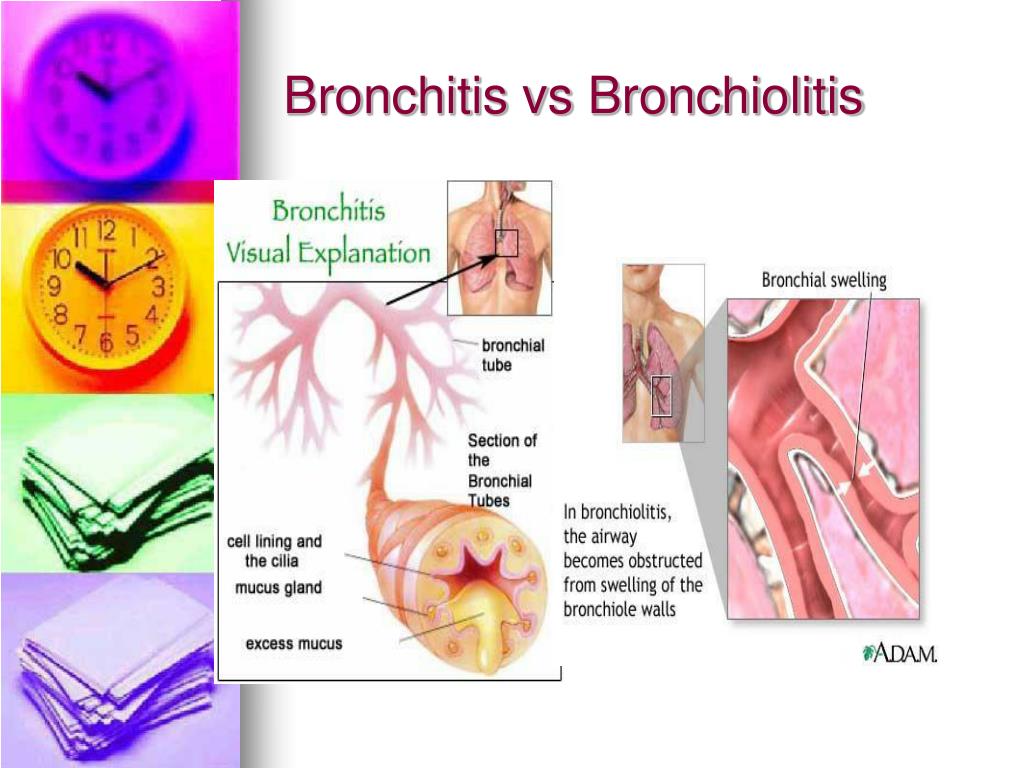 Lancet. 1997;349:683–687. doi: 10.1016/S0140-6736(96)07585-X. [PubMed] [CrossRef] [Google Scholar]
Lancet. 1997;349:683–687. doi: 10.1016/S0140-6736(96)07585-X. [PubMed] [CrossRef] [Google Scholar]
38. Lindbaek M, Hjortdahl P, Johnsen U. Randomised, double blind, placebo controlled trial of penicillin V and amoxycillin in treatment of acute sinus infection in adults. BMJ. 1996;313:325–329. [PMC free article] [PubMed] [Google Scholar]
39. Evans KL. Diagnosis and management of sinusitis. Lancet. 1994;309:1415–1422. [PMC free article] [PubMed] [Google Scholar]
40. Stalman W, van Essen GA, van der Graaf Y. The end of antibiotic treatment in adults with acute sinusitis-like complaints in general practice? A placebo-controlled double-blind randomized doxycycline trial. Br J Gen Pract. 1997;47:794–799. [PMC free article] [PubMed] [Google Scholar]
41. Williams JW, Jr, Holleman DR, Jr, Samsa GP, et al. Randomized controlled trial of 3 vs 10 days of trimethoprim/sulfamethoxazole for acute maxillary sinusitis. JAMA. 1995;273:1015–1021. doi: 10.1001/jama.273.13.1015. [PubMed] [CrossRef] [Google Scholar]
42. De Bock GH, Dekker FW, Stolt J, et al. Antimicrobial treatment in acute maxillary sinusitis: A meta-analysis. J Clin Epidemiol. 1997;50:881–890. doi: 10.1016/S0895-4356(97)00117-0. [PubMed] [CrossRef] [Google Scholar]
De Bock GH, Dekker FW, Stolt J, et al. Antimicrobial treatment in acute maxillary sinusitis: A meta-analysis. J Clin Epidemiol. 1997;50:881–890. doi: 10.1016/S0895-4356(97)00117-0. [PubMed] [CrossRef] [Google Scholar]
43. Froom J, Culpepper L, Grob P, Bartelds A, et al. Diagnosis and antibiotic treatment of acute otitis media: Report from International Primary Care Network. BMJ. 1990;300:528–586. doi: 10.1136/bmj.300.6724.582. [PMC free article] [PubMed] [CrossRef] [Google Scholar]
44. American Academy of Pediatrics Subcommittee on Management of Acute Otitis Media Diagnosis and management of acute otitis media. Pediatrics. 2004;113:1451–1465. doi: 10.1542/peds.113.5.1451. [PubMed] [CrossRef] [Google Scholar]
45. Plasschaert AI, Rovers MM, Schilder AG, et al. Trends in doctor consultations, antibiotic prescription and specialist referrals for otitis media in children: 1995–2003. Pediatrics. 2006;117:1879–1886. doi: 10.1542/peds.2005-2470. [PubMed] [CrossRef] [Google Scholar]
46. Sox CM, Finkelstein JA, Yin R, et al. Trends in otitis media treatment and relapse. Pediatrics. 2008;121:674–679. doi: 10.1542/peds.2007-1565. [PubMed] [CrossRef] [Google Scholar]
Sox CM, Finkelstein JA, Yin R, et al. Trends in otitis media treatment and relapse. Pediatrics. 2008;121:674–679. doi: 10.1542/peds.2007-1565. [PubMed] [CrossRef] [Google Scholar]
47. Fisher T, Singer AJ, Lee C, Thode HC., Jr National trends in emergency department antibiotic prescribing in children with acute otitis media, 1996–2005. Acad Emerg Med. 2007;14:1172–1175. [PubMed] [Google Scholar]
48. Bluestone CD. Otitis media in children: To treat or not to treat? N Engl J Med. 1982;306:1399–1404. doi: 10.1056/NEJM198206103062305. [PubMed] [CrossRef] [Google Scholar]
49. Spiro DM, Tay KY, Arnold DH, et al. Wait-and-see prescription for the treatment of acute otitis media: A randomized controlled trial. JAMA. 2006;206:1235–1241. doi: 10.1001/jama.296.10.1235. [PubMed] [CrossRef] [Google Scholar]
50. Vernacchio L, Vezina RM, Mitchell AA. Management of acute otitis media by primary care physicians: Trends since the release of the 2004 American Academy of Pediatrics/American Academy of Family Physicians clinical practice guidelines. Pediatrics. 2007;120:281–287. doi: 10.1542/peds.2006-3601. [PubMed] [CrossRef] [Google Scholar]
Pediatrics. 2007;120:281–287. doi: 10.1542/peds.2006-3601. [PubMed] [CrossRef] [Google Scholar]
51. Kozyrskyi A, Hildes-Ripstein GE, Longstaffe SEA, et al. Treatment of acute otitis media with a shortened course of antibiotics. JAMA. 1998;279:1736–1742. doi: 10.1001/jama.279.21.1736. [PubMed] [CrossRef] [Google Scholar]
52. Green SM, Rothrock SG. Single-dose intramuscular ceftriaxone for acute otitis media in children. Pediatrics. 1993;91:23–30. [PubMed] [Google Scholar]
53. Chamberlain JM, Boenning DA, Waisman Y, et al. Single-dose ceftiraxone versus 10 days of cefaclor for otitis media. Clin Pediatr. 1994;33:642–646. doi: 10.1177/000992289403301101. [PubMed] [CrossRef] [Google Scholar]
54. Barnett ED, Teele DS, Klein JO, et al. Comparison of ceftriaxone and trimethoprim-sulfamethoxasole for acute otitis media. Pediatrics. 1997;99:23–28. doi: 10.1542/peds.99.1.23. [PubMed] [CrossRef] [Google Scholar]
55. Soley CA, Arguedas A. Single-dose azithromycin for the treatment of children with acute otitis media. Expert Rev Anti Infect Ther. 2005;3(5):707–717. doi: 10.1586/14787210.3.5.707. [PubMed] [CrossRef] [Google Scholar]
Expert Rev Anti Infect Ther. 2005;3(5):707–717. doi: 10.1586/14787210.3.5.707. [PubMed] [CrossRef] [Google Scholar]
56. Kaplan B, Wandstrat TL, Cunningham JR. Overall cost in the treatment of otitis media. Pediatr Infect Dis J. 1997;16(2 suppl):S9–S11. [PubMed] [Google Scholar]
57. Hathaway TJ, Katz HP, Dershewitz RA, Marx TJ. Acute otitis media: Who needs post treatment follow-up? Pediatrics. 1994;94:143–147. [PubMed] [Google Scholar]
58. Puczynski MS, Stankiewicz JA, Cunningham DG, et al. Follow-up visit after acute otitis media. Br J Clin Pract. 1985;39(4):132–135. [PubMed] [Google Scholar]
59. Hueston WJ, Ornstein S, Jenkins RG, et al. Treatment of recurrent otitis media after a previous treatment failure: Which antibiotics work best? J Fam Pract. 1999;48:43–46. [PubMed] [Google Scholar]
60. Valkenburg HA, Havorkorn MJ, Goslings WRO, et al. Streptococcal pharynfitis in the general population. J Infect Dis. 1971;124:348–358. doi: 10.1093/infdis/124.4.348. [PubMed] [CrossRef] [Google Scholar]
[PubMed] [CrossRef] [Google Scholar]
61. Siegel AC, Johnson EE, Stollerman GH. Controlled studies of streptococcal pharyngitis in a pediatric population. N Engl J Med. 1961;565:559–571. doi: 10.1056/NEJM196109212651201. [CrossRef] [Google Scholar]
62. Richardson MA. Sore throat, tonsillitis, and adenoiditis. Otolaryngol Clin North Am. 1999;83:75–83. [PubMed] [Google Scholar]
63. Little P, Williamson I, Warner G, et al. Open randomised trial of prescribing strategies in managing sore throat. BMJ. 1997;314:722–727. [PMC free article] [PubMed] [Google Scholar]
64. Reed BD, Huck W, Lutz L, et al. Prevalence of chlamydia trachomatis and mycoplasma pneumonia in children with and without pharyngitis. J Fam Pract. 1987;26:387–392. [PubMed] [Google Scholar]
65. Kaplan EL, Top FH, Dudding BA, et al. Diagnosis of streptococcal pharyngitis: Differentiation of active infection from the carrier state in the symptomatic child. J Infect Dis. 1971;123:490–501. doi: 10.1093/infdis/123. 5.490. [PubMed] [CrossRef] [Google Scholar]
5.490. [PubMed] [CrossRef] [Google Scholar]
66. Randolph MF, Gerber MA, DeMeo KK, Wright L. Effect of antibiotic therapy on the clinical course of streptococcal pharyngitis. J Pediatr. 1985;106:870–875. doi: 10.1016/S0022-3476(85)80228-6. [PubMed] [CrossRef] [Google Scholar]
67. Petersen I, Johnson AM, Islam A, et al. Protective effect of antibiotics against serious complications of common respiratory tract infections: Retrospective cohort study with the UK General Practice Research Database. BMJ. 2007;335:982. doi: 10.1136/bmj.39345.405243.BE. [PMC free article] [PubMed] [CrossRef] [Google Scholar]
68. Gerber MA, Baltimore RS, Eaton CB, Gewitz M, Rowley AH, Shulman ST, Taubert KA. Prevention of rheumatic fever and diagnosis and treatment of acute streptococcal pharyngitis. Circulation. 2009;119:1541–1551. doi: 10.1161/CIRCULATIONAHA.109.191959. [PubMed] [CrossRef] [Google Scholar]
69. Dagnelie CF, Bartelink ML, van der Graaf Y, et al. Towards a better diagnosis of throat infections (with group A beta-hemolytic stretococcus) in general practice.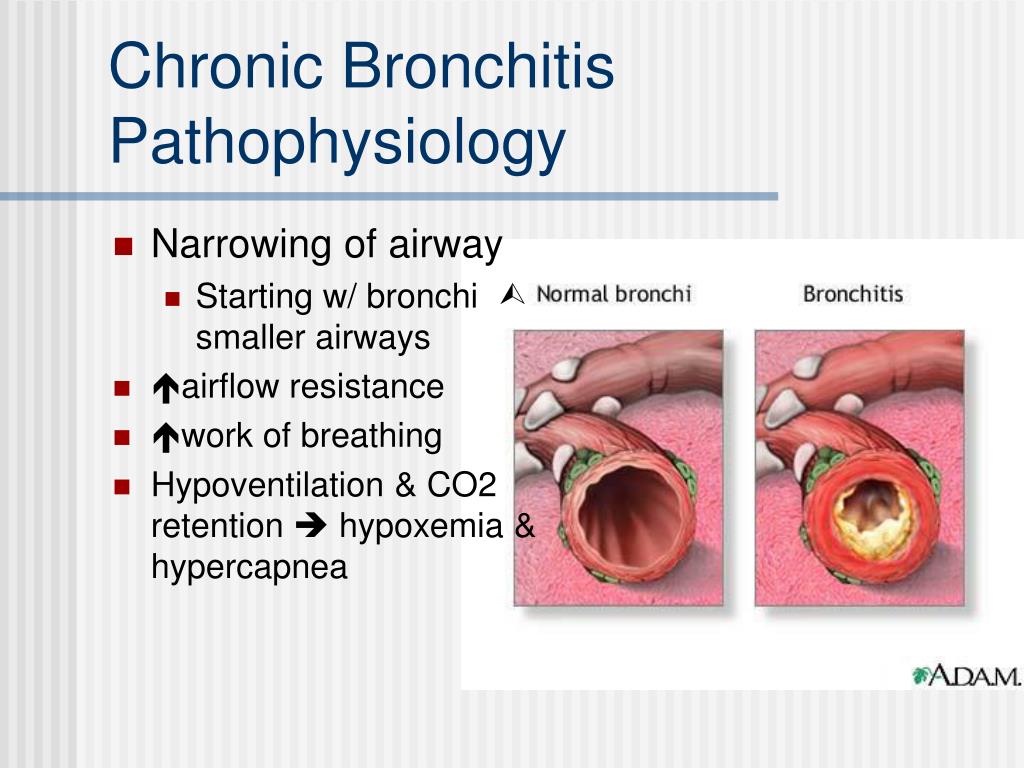 Br J Gen Pract. 1998;48:959–962. [PMC free article] [PubMed] [Google Scholar]
Br J Gen Pract. 1998;48:959–962. [PMC free article] [PubMed] [Google Scholar]
70. McIsaac WJ, White D, Tannenbaum D, Low DE. A clinical score to reduce unnecessary antibiotic use in patient with sore throat. CMAJ. 1998;158:75–83. [PMC free article] [PubMed] [Google Scholar]
71. Dobbs F. A scoring system for predicting group A streptococcal throat infection. Br J Gen Pract. 1996;46:461–464. [PMC free article] [PubMed] [Google Scholar]
72. Ebell MH, Smith MA, Barry HC, et al. The rational clinical examination. Does this patient have strep throat? JAMA. 2000;284:2912–2918. doi: 10.1001/jama.284.22.2912. [PubMed] [CrossRef] [Google Scholar]
73. Webb KH. Does culture confirmation of high-sensitivity rapid streptococcal tests make sense? A medical decision analysis. Pediatrics. 1998;101:E2. doi: 10.1542/peds.101.2.e2. [PubMed] [CrossRef] [Google Scholar]
74. Petersen K, Phillips RS, Soukup J, et al. The effect of erythromycin on resolution of symptoms among adults with pharyngitis not caused by group A streptococcus. J Gen Intern Med. 1997;12:95–101. doi: 10.1007/s11606-006-5003-y. [PMC free article] [PubMed] [CrossRef] [Google Scholar]
J Gen Intern Med. 1997;12:95–101. doi: 10.1007/s11606-006-5003-y. [PMC free article] [PubMed] [CrossRef] [Google Scholar]
75. Little P, Gould C, Williamson I, et al. Reattendance and cmplications in a randomised trial of prescribing strategies for sore throat: The medicalising effect of prescribing antibiotics. BMJ. 1997;315:350–352. [PMC free article] [PubMed] [Google Scholar]
76. Dippel DWJ, Touw-Otten F, Habema JDF. Management of children with acute pharyngitis: A decision analysis. J Fam Pract. 1992;34:149–159. [PubMed] [Google Scholar]
77. Feder HM, Gerber MA, Randolph MF, et al. Once daily therapy for streptococcal pharyngitis with amoxicillin. Pediatrics. 1999;103:47–51. doi: 10.1542/peds.103.1.47. [PubMed] [CrossRef] [Google Scholar]
78. Gopicharnd I, Williams GD, Medendorp SV, et al. Randomized, single-blinded comparative study of the efficacy of amoxicillin (40 mg/kg/day) versus standard-dose penicillin V in the treatment of group A streptococcal pharyngitis in children. Clin Pediatr. 1998;37:341–346. doi: 10.1177/000992289803700602. [PubMed] [CrossRef] [Google Scholar]
Clin Pediatr. 1998;37:341–346. doi: 10.1177/000992289803700602. [PubMed] [CrossRef] [Google Scholar]
79. Kearsley NL, Campbell A, Sanderson AA, Weir RD, et al. Comparison of clarithromycin suspension and amoxycillin syrup for the treatment of children with pharyngitis and/or tonsillitis. Br J Clin Pract. 1997;51:133–137. [PubMed] [Google Scholar]
80. O’Doherty B. Azithromycin versus penicillin V in the treatment of paediatric patients with acute streptococcal pharyngitis/tonsillitis. Paediatric Azithromycin Study Group. Eur J Clin Microbiol Infect Dis. 1996;15:718–724. doi: 10.1007/BF01691958. [PubMed] [CrossRef] [Google Scholar]
81. Schaad UB, Heynen G. Evaluation of the efficacy, safety and toleration of azithromycin vs. penicillin V in the treatment of acute streptococcal pharyngitis in children: Results of a multicenter, open comparative study. The Swiss Tonsillopharyngitis Study Group. Pediatr Infect Dis J. 1996;15:791–795. doi: 10.1097/00006454-199609000-00011. [PubMed] [CrossRef] [Google Scholar]
82.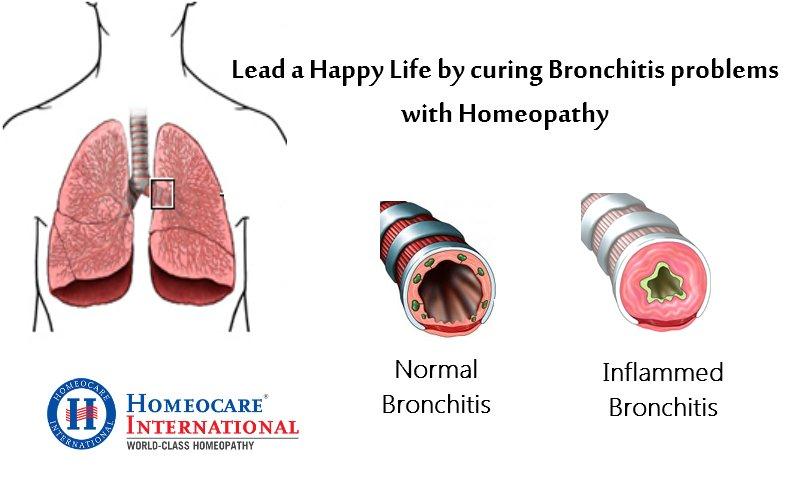 Cremer J, Wallrauch C, Milatovic D, et al. Azithromucin versus cefaclor in the treatment of pediatrci patient with acute group A beta-hemolytic streptococcal tonsillopharyngitis. Eur J Clin Microbiol Infect Dis. 1998;17:235–239. [PubMed] [Google Scholar]
Cremer J, Wallrauch C, Milatovic D, et al. Azithromucin versus cefaclor in the treatment of pediatrci patient with acute group A beta-hemolytic streptococcal tonsillopharyngitis. Eur J Clin Microbiol Infect Dis. 1998;17:235–239. [PubMed] [Google Scholar]
83. Tanz RR, Shulman ST, Barthel MJ, et al. Penicillin plus rifampin eradicates pharyngeal carriage of group A streptococci. J Pediatr. 1985;106:876–880. doi: 10.1016/S0022-3476(85)80229-8. [PubMed] [CrossRef] [Google Scholar]
84. Williamson HA. A randomized controlled trial of doxycycline in the treatment of acute bronchitis. J Fam Pract. 1984;19:481–486. [PubMed] [Google Scholar]
85. Tyrrell DAJ. Common Colds and Related Diseases. Baltimore: Williams & Wilkins; 1965. [Google Scholar]
86. Mogabgab WJ. Mycoplasma pneumoniae and adenovirus respiratory illnesses in military and university personnel. Am Rev Respir Dis. 1968;97:345–358. [PubMed] [Google Scholar]
87. Falck G, Heyman L, Gnarpe J, et al. Chlamydia pneumoniae (TWAR): A common agent in acute bronchitis. Scand J Infect Dis. 1994;26:179–187. doi: 10.3109/00365549409011782. [PubMed] [CrossRef] [Google Scholar]
Chlamydia pneumoniae (TWAR): A common agent in acute bronchitis. Scand J Infect Dis. 1994;26:179–187. doi: 10.3109/00365549409011782. [PubMed] [CrossRef] [Google Scholar]
88. Christ-Crain M, Jaccard-Stolz D, Bingisser R, et al. Effect of procalcitonin-guided treatment on antibiotic use and outcome in lower respiratory tract infections: Cluster-randomized, single-blinded intervention trial. Lancet. 2004;363:600–607. doi: 10.1016/S0140-6736(04)15591-8. [PubMed] [CrossRef] [Google Scholar]
89. Mainous AGIII, Zoorob RJ, Hueston WJ. Current management of acute bronchitis in ambulatory care: The use of antibiotics and bronchodilators. Arch Fam Med. 1996;5:79–83. doi: 10.1001/archfami.5.2.79. [PubMed] [CrossRef] [Google Scholar]
90. Smucny JJ, Becker LA, Glazier RH, McIsaac W. Are antibiotics effective treatment for q acute bronchitis? A meta-analysis. J Fam Pract. 1998;47:453–460. [PubMed] [Google Scholar]
91. Fahey T, Stocks N, Thomas T. Quantitative systematic review of randomised controlled trials comparing antibiotic with placebo for acute cough in adults. BMJ. 1998;316:906–910. [PMC free article] [PubMed] [Google Scholar]
BMJ. 1998;316:906–910. [PMC free article] [PubMed] [Google Scholar]
92. Melbye H, Aasebo U, Straume B. Symptomatic effect of inhaled fenoterol in acute bronchitis: A placebo-controlled double-blind study. Fam Pract. 1991;8:216–222. doi: 10.1093/fampra/8.3.216. [PubMed] [CrossRef] [Google Scholar]
93. Hueston WJ. Albuterol delivered by metered-dose inhaler to treat acute bronchitis. J Fam Pract. 1994;39:437–440. [PubMed] [Google Scholar]
94. Littenberg B, Wheeler M, Smith DS. A randomized controlled trial of oral albuterol in acute cough. J Fam Pract. 1996;42:49–53. [PubMed] [Google Scholar]
types, causes, symptoms, signs, diagnosis, treatment, prevention in children and adults
Acute bronchitis
Chronic bronchitis
Occupational bronchitis
Diagnosis
Complications
Treatment 90 003
Prognosis and prevention
Bronchitis is a disease affecting the lower respiratory tract with inflammation of the bronchial mucosa. The inflammatory process can develop only in one part or affect the entire bronchial tree. The main difference from pneumonia is the absence of involvement in the pathological process of the alveoli.
The inflammatory process can develop only in one part or affect the entire bronchial tree. The main difference from pneumonia is the absence of involvement in the pathological process of the alveoli.
The duration of the disease can be acute and chronic with exacerbations.
The main symptom that allows to suspect a pathology is a cough with sputum, which often causes shortness of breath. Bronchitis is one of the most common reasons for all visits to the doctor.
Acute bronchitis
Many respiratory diseases, and this is SARS and influenza, often occur with manifestations of acute bronchitis. The main pathogens are viruses: rhinoviruses, enteroviruses, coronaviruses, adenoviruses. They account for 90% of all cases. At the same time, rhinoviruses and enteroviruses give a mild course, but coronaviruses and adenoviruses can cause severe complications.
Bacterial causes of bronchitis are much less common and are usually caused by a variety of bacteria. It is noted that during exacerbation of chronic bronchitis, bacteria in the sputum are excreted much more often than in the acute form.
It is noted that during exacerbation of chronic bronchitis, bacteria in the sputum are excreted much more often than in the acute form.
Acute bronchitis can be caused by allergens, as well as exposure to dust, polluted or smoky air.
Bronchitis of the lungs can also be mixed, when infectious and physico-chemical factors are combined, as well as unspecified, when it is not possible to determine what caused the development of the disease.
According to the area of inflammation, bronchitis in children and adults can be divided into:
- tracheobronchitis;
- with lesions of medium or small bronchi;
- bronchiolitis.
The main symptom of acute bronchitis is a cough that occurs with existing manifestations of SARS or another infection. The temperature with bronchitis rises moderately, weakness, a runny nose appear, and the state of health worsens.
At first the cough is dry, there is little sputum, and the coughing attacks become especially painful at night. After 3-4 days, a dry cough is replaced by a wet one, with copious sputum discharge.
After 3-4 days, a dry cough is replaced by a wet one, with copious sputum discharge.
In a mild course of the disease, shortness of breath is not observed. If it appears over time, then this indicates damage to the small bronchi, which leads to obstructive bronchitis.
The general condition of the patient during treatment is normalized in a few days, and the cough may persist for another 2-3 weeks. If the temperature does not subside, but only rises, and the general condition noticeably worsens, this indicates the addition of a bacterial infection and the development of complications.
Chronic bronchitis
This diagnosis is made in case of cough with sputum for at least 3 months a year for 2 years or even more. The most common cause of chronic bronchitis is smoking. The main symptoms are a prolonged cough, shortness of breath may join. The cough is usually loose, beginning in the morning after sleep. A little sputum comes out. At the same time, in the cold season and in wet weather, the cough intensifies, but almost completely stops in the summer.
The general state of health does not change in any way, and the cough itself in smokers does not cause any concern and is habitual throughout life.
One of the characteristic features of this disease is the alternation of periods of exacerbation and remission.
People with symptoms of chronic bronchitis are more likely than others to suffer from acute respiratory infections or acute respiratory viral infections, while the risk of damage to the lower sections of the bronchial tree and the development of pneumonia increases several times.
In the future, during the period of exacerbation of bronchitis, the symptoms become more pronounced. The cough is greatly intensified, manifested by seizures, becomes hoarse, tearing the throat, without sputum discharge. Other symptoms appear – constant weakness, fatigue, night sweats. With exertion, shortness of breath begins to appear.
Occupational bronchitis
This type of chronic bronchitis develops in people of certain professions. Such people at work constantly deal with finely dispersed substances that enter the lungs when breathing.
Such people at work constantly deal with finely dispersed substances that enter the lungs when breathing.
This form of bronchitis, for example, often develops in people associated with the production of asbestos, coal, latex, talc, while working with cotton, silica.
Prolonged contact and inhalation of these substances irritate the lung tissue, accumulate in the lungs, which causes inflammation and coughing. With regular exposure to these factors, in the absence of treatment, chronic obstructive pulmonary disease (COPD) often develops.
Another bronchitis without fever – dust. It is also a chronic occupational lung disease that begins to develop when inhaling air containing an increased concentration of dust. Most often, miners suffer from it.
Diagnosis
Before starting treatment, it is necessary to diagnose bronchitis in order to understand its origin and find the causative agent of the disease (if any).
The main diagnostic procedures are:
- general blood and urine test;
- blood biochemistry;
- X-ray of the chest organs or computed tomography – according to indications for the differential diagnosis of the disease and the identification of probable complications;
- spirometry or peak flowmetry;
- if necessary, bronchoscopy or bronchography;
- ECG, and if necessary – ultrasound of the heart;
- microbiological sputum analysis.

To exclude hypoxia, especially if bronchiolitis is suspected, it is recommended to monitor saturation.
Differential diagnosis and complications
The symptoms of bronchitis often resemble those of pneumonia. Therefore, first of all, differential diagnosis with this dangerous disease is required. The main differences between pneumonia are respiratory failure, persistent fever, lesions in the lungs on the x-ray.
The most common complication of acute bronchitis is bronchopneumonia. It develops with a decrease in local immunity, lack of proper treatment, as well as with the addition of a bacterial infection.
In the case of chronic bronchitis, the risks of other lung diseases increase: COPD, bronchial asthma, emphysema and bronchiectasis, the likelihood of complications of acute respiratory infections in the form of bacterial pneumonia increases significantly.
Also, against the background of chronic lung diseases, disorders of the cardiovascular system are possible – hypertension, pulmonary hypertension.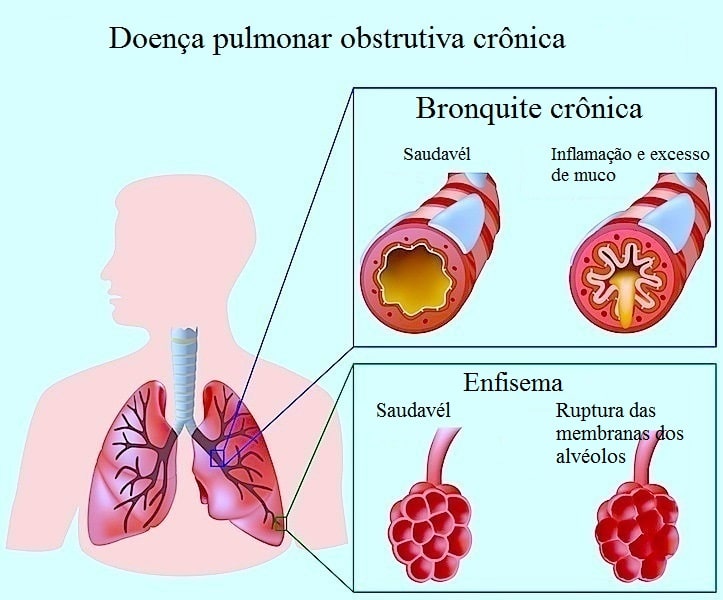
Treatment
Therapy will depend on the presence or absence of complications, as well as the general condition of the patient.
Uncomplicated acute viral bronchitis
The therapy is carried out on an outpatient basis. Hospitalization is required only in case of development of respiratory failure and possible accession of pneumonia.
Signs of possible complications will be:
- high temperature above 38 °C, pain in the chest, and the symptoms do not go away, increase over 2-3 days;
- the appearance of shortness of breath, shortness of breath begins to develop with minimal physical exertion, at rest;
- cough with bloody sputum;
- children’s age;
- the presence of concomitant serious diseases.
Cough with bronchitis is not so easy to cure. The main goals of treatment are to relieve symptoms of the disease and maintain immunity. Bronchitis without coughing is very rare.
Today, the most effective methods of treating acute bronchitis of viral etiology are:
- antivirals;
- paracetamol or ibuprofen – in case of temperature increase above 38 °C;
- copious warm drink;
- frequent airing of the room, the creation of good indicators of humidity and temperature.
 This noticeably facilitates breathing and improves the excretion of sputum;
This noticeably facilitates breathing and improves the excretion of sputum; - smoking cessation;
- mucolytic or antitussive drugs (depending on the type of cough).
Antibiotics for bronchitis of viral origin are not prescribed, since they are absolutely ineffective.
Acute obstructive bronchitis
Therapy of this type of inflammation has some features. Treatment is recommended to be carried out using a device that sprays the drug into the respiratory tract – a nebulizer.
For inhalation, solutions of mucolytics (ambroxol, acetylcysteine), bronchodilators (fenoterol and ipratropium bromide) are used. They are mixed with saline and help prevent the development of bronchial edema, which is important for preventing shortness of breath. In some cases, inhaled corticosteroids may be recommended for treatment. The duration of the course and the frequency of use of drugs are recommended only by a doctor.
Bacterial bronchitis
In the treatment of this type of disease, it is recommended to use antibacterial agents that are prescribed by the attending physician. A number of antibiotics can be prescribed as inhalations through a nebulizer. In addition, symptomatic therapy is recommended to improve sputum discharge.
A number of antibiotics can be prescribed as inhalations through a nebulizer. In addition, symptomatic therapy is recommended to improve sputum discharge.
A special group are patients at risk – those who are over 75 years of age, have severe comorbidities or are using immunosuppressive therapy. For them, the dosage of drugs is prescribed individually.
Chronic bronchitis
With the development of this course of the disease, long-term and individually selected treatment is required. There is no single cure for bronchitis for everyone: each treatment plan is made depending on the age of the patient, the symptoms present, the severity of their manifestation and the duration of the course.
In case of exacerbation and the appearance of purulent sputum, antibiotics can be prescribed, but this is done only according to the results of a sputum sensitivity test. They help to fight sputum with bronchitis, drugs that thin it and help to cough up.
If chronic bronchitis is allergic, antihistamines are prescribed. Recommended warm plentiful alkaline drink, breathing exercises, physiotherapy. Vitamin and mineral complexes may be prescribed.
Recommended warm plentiful alkaline drink, breathing exercises, physiotherapy. Vitamin and mineral complexes may be prescribed.
After an exacerbation, a spa treatment is recommended. It is also important to identify and eliminate the provoking factor that led to the development of the disease in its chronic form.
Prognosis and prevention
With proper and timely treatment of bronchitis, the prognosis is favorable. Usually, full recovery occurs within 2-3 weeks from the onset of symptoms. However, a cough in a quarter of all patients can persist for another one, and in some cases two months.
Effective measures to prevent bronchitis include:
- washing hands with soap, rinsing the nose and mouth with saline solution;
- vaccination against bronchopulmonary infections;
- smoking cessation;
- proper nutrition with adequate protein content;
- hardening.
It is also advisable to air the room hourly, do wet cleaning, control humidity and air temperature.:max_bytes(150000):strip_icc()/bronchitis-overview-914667_final2-1160770e960645758b8378a75286e270.png)
The author of the article:
Ivanova Natalya Vladimirovna
therapist
reviews leave a review
Clinic
m. Sukharevskaya
Services
- Title
- Primary appointment (examination, consultation) with a pulmonologist2300
- Primary appointment (examination, consultation) with a pulmonologist (for children)1950
- Repeated appointment (examination, consultation) with a pulmonologist1900
- Repeated appointment (examination, consultation) with a pulmonologist (for children)1700
Health articles
All articlesAllergistGastroenterologistHematologistGynecologistDermatologistImmunologistInfectionistCardiologistCosmetologistENT doctor (otolaryngologist)MammologistNeurologistNephrologistOncologistOphthalmologistProctologistPsychotherapistPulmonologistRheumatologistTraumatologist-orthopedistTrichologistUrologistPhlebologistSurgeonEndocrinologist
Our doctors
Specialization of the doctorAllergistAndrologistAnesthetistPediatrician house callPaediatrician house callGastroenterologistHematologistGynecologistBreastfeedingDermatologistPediatric allergologistPediatric gastroenterologistPediatric gynecologistPediatric dermatologistPediatric infectious disease specialistPediatric cardiologistPediatric ENT specialistPediatric chiropractorPediatric massagePediatric neurologistPediatric neurologist phrologistPediatric oncologistPediatric osteopathPediatric ophthalmologistPediatric psychiatristPediatric traumatologistPediatric urologistPediatric surgeonPediatric endocrinologistPediatric departmentDietologistImmunologistInfectionistHeadache roomCardiologistCosmetologistENT doctor (otolaryngologist)MammologistManual therapistMassageNarcologistNeurologistNeurologistNephrologistOncologistOperational unitOsteopathOt division of pediatrics m.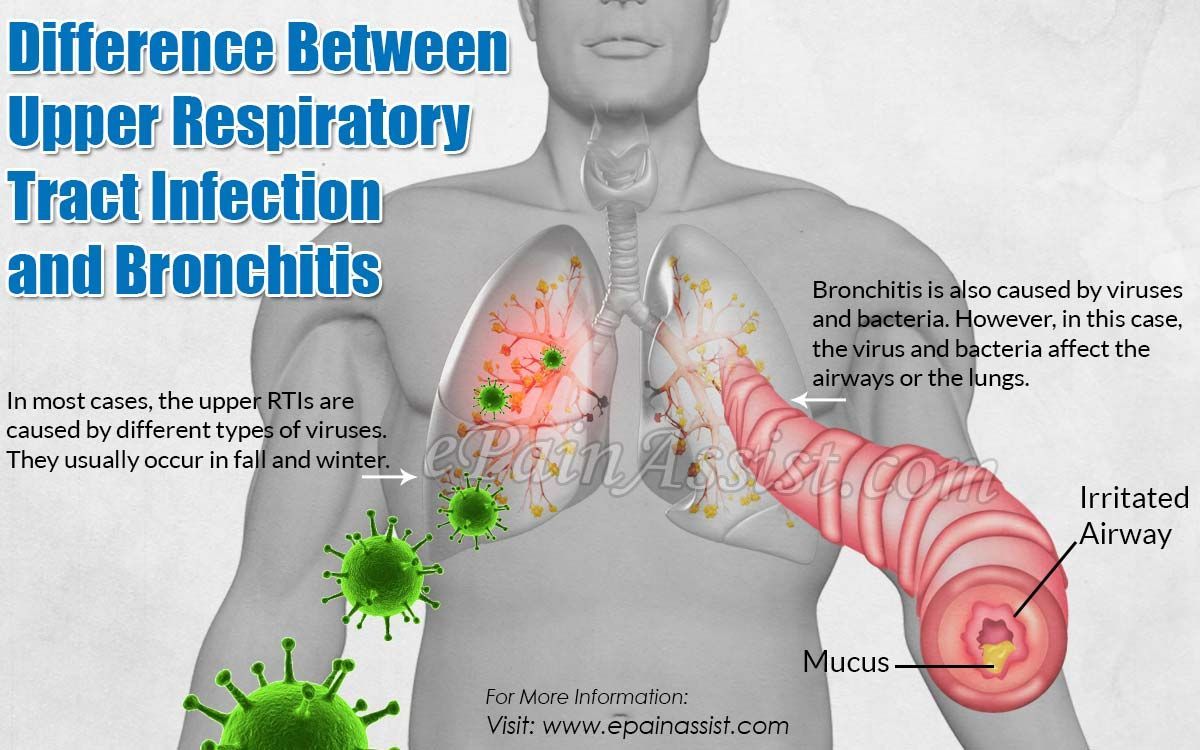 PolyankaOphthalmologistOphthalmic surgeonPediatricianPlanning pregnancyPodologistProctologistPsychotherapistPulmonologistRheumatologistReproductionistReflexotherapistDentistTelemedicine in the “Polyclinic.ru”TherapistTraumatologist-orthopedistTrichologistUltrasound (ultrasound examination)UrologistPhysiotherapistPhlebologistSurgeonEndocrinologistAesthetic gynecology Clinics. Smolensk. Taganskaya. Street 1905 years. Red Gates. AvtozavodskayaPharmacy. Glades. Sukharevskaya. st. Academician Yangelam. Frunzenskaya Zelenograd
PolyankaOphthalmologistOphthalmic surgeonPediatricianPlanning pregnancyPodologistProctologistPsychotherapistPulmonologistRheumatologistReproductionistReflexotherapistDentistTelemedicine in the “Polyclinic.ru”TherapistTraumatologist-orthopedistTrichologistUltrasound (ultrasound examination)UrologistPhysiotherapistPhlebologistSurgeonEndocrinologistAesthetic gynecology Clinics. Smolensk. Taganskaya. Street 1905 years. Red Gates. AvtozavodskayaPharmacy. Glades. Sukharevskaya. st. Academician Yangelam. Frunzenskaya Zelenograd
Etteva Zuriyat Supiyanovna
therapist, cardiologist, pulmonologist
reviews
Make an appointment
Clinic
m. Red Gate
Kryuchkova Anna Sergeevna
pulmonologist
reviews
Make an appointment
Clinic
m. Frunzenskaya
Sayan Irina Ilyinichna
ultrasound doctor, therapist, pulmonologist
reviews
Make an appointment
Clinic
m. Frunzenskaya
Frunzenskaya
Leontyeva Natalia Yurievna
pulmonologist
reviews
Make an appointment
Clinic
m. Sukharevskaya
Kukharenok Maria Vyacheslavovna
pulmonologist
reviews
Make an appointment
Clinic
m. Sukharevskaya
Gromolyuk Ekaterina Alexandrovna
pulmonologist
reviews
Make an appointment
Clinic
m. Polyanka
causes, diagnosis, symptoms, who treats
What needs to be done to diagnose and treat bronchitis ? To solve this problem, the first step for the patient is to make an appointment with a pulmonologist. After the initial examination, the doctor may prescribe additional tests:
- CT scan of the chest
- chest x-ray
- blood test
- spirometry
- pulse oximetry
- echocardiography.

Bronchitis is an inflammation of the bronchial mucosa, the tubes that carry air into and out of the lungs. Patients with bronchitis often have a cough that produces thick, colorless mucus. They also experience wheezing, chest pain, and shortness of breath.
Types of bronchitis
Bronchitis can be acute or chronic:
- acute bronchitis. Acute bronchitis develops after a cold or other respiratory infection. Symptoms last less than 3 weeks, often improve within days without any lasting effects
- chronic bronchitis. Bronchitis is classified as chronic if symptoms, primarily a productive cough, persist for more than 3 months within 2 years. The persistent inflammation of the lining of the bronchi leads to an excessive accumulation of sticky mucus in the airways, which restricts the flow of air into and out of the lungs.
Chronic bronchitis is a type of chronic obstructive pulmonary disease. Many patients with chronic bronchitis eventually develop emphysema, which is also a type of chronic obstructive pulmonary disease
Symptoms of bronchitis
After a long period of inflammation and irritation of the bronchi, chronic bronchitis leads to several characteristic symptoms.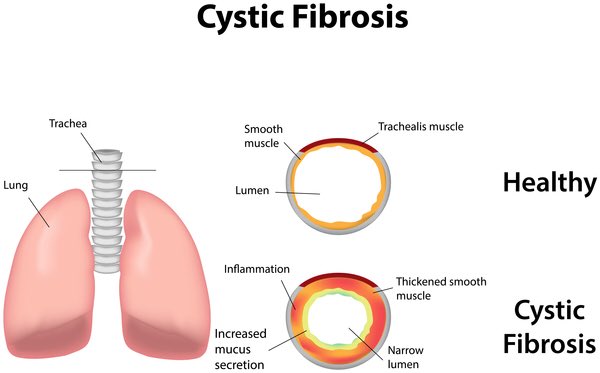 Common signs of chronic bronchitis include:
Common signs of chronic bronchitis include:
- persistent cough
- coughing up yellow, green or white mucus
- wheezing
- chest discomfort.
Over time, the amount of mucus gradually increases due to increased mucus production in the lungs. It accumulates in the bronchi, causing difficulty breathing, especially during physical activity. Other symptoms of chronic bronchitis include:
- weakness
- fever
- frequent and severe respiratory infections
- wheezing and wheezing when breathing
- bluish nails, lips and skin due to low oxygen levels
- swelling of the legs and ankles.
As chronic bronchitis progresses, symptoms change in severity and frequency. For example, a cough may disappear for a while and then reappear. More severe episodes can be caused by a variety of factors, including:
- respiratory tract infections such as colds or flu
- infections in other parts of the body
- exposure to environmental irritants such as air pollution or dust
- heart disease.

Causes of bronchitis
Chronic bronchitis occurs when the lining of the bronchi is constantly irritated and inflamed. Constant irritation and swelling damage the airways and cause a buildup of sticky mucus. This leads to difficulty breathing, which gradually gets worse. Causes of chronic bronchitis include:
- infections. Infections usually cause initial irritation and swelling leading to acute bronchitis
- smoking. Smoking is a leading risk factor for the development of chronic bronchitis. More than 90% of patients with this disease have a history of smoking
- passive smoking. Passive smoking also increases the risk of developing chronic bronchitis
- air pollution. Exposure to polluted air, chemical or industrial fumes, dust, and toxic gases increases the risk of developing chronic bronchitis.
Which doctor diagnoses bronchitis
Many people ignore the symptoms of chronic bronchitis, believing that it is just a smoker’s cough. However, it is important to immediately contact a general practitioner or pulmonologist at the slightest suspicion of bronchitis. If chronic bronchitis is not treated promptly, the risk of serious lung damage is significantly increased, which can lead to complications. Seek immediate medical attention if cough:
However, it is important to immediately contact a general practitioner or pulmonologist at the slightest suspicion of bronchitis. If chronic bronchitis is not treated promptly, the risk of serious lung damage is significantly increased, which can lead to complications. Seek immediate medical attention if cough:
- lasts more than 3 weeks
- interferes with sleep
- temperature above 38°C
- discolored mucus or blood is excreted
- causes wheezing or shortness of breath.
How a Doctor Diagnoses Bronchitis
To diagnose chronic bronchitis, a doctor will start with a medical history, including symptoms and other medical conditions, and a physical examination. He will also order the following tests:
- chest x-ray. Chest x-ray rules out other lung conditions, such as pneumonia, that can cause coughing
- blood test. Blood test used to look for signs of infection
- spirometry. This is a lung function test that involves blowing air into a device called a spirometer to measure the flow of air going in and out of the lungs
- arterial blood gases.
 This method, also called blood gas analysis, measures the amount of oxygen and carbon dioxide in the blood. The result allows the doctor to know how well the lungs are able to carry oxygen into the blood and remove carbon dioxide
This method, also called blood gas analysis, measures the amount of oxygen and carbon dioxide in the blood. The result allows the doctor to know how well the lungs are able to carry oxygen into the blood and remove carbon dioxide - pulse oximetry. This test measures the level of oxygen saturation in the blood. This is a simple method that involves attaching a small device to a part of the body, usually a finger
- computed tomography of the lungs. A CT scan takes a series of x-rays. This type of scan may be ordered if the doctor needs to get a more detailed picture of the lungs than can be done with an x-ray.
How a doctor treats bronchitis
Although chronic bronchitis is incurable, it can be managed with medication and lifestyle changes, especially if diagnosed early.
Drug treatment of bronchitis
Depending on the severity of the condition, the treatment plan may consist of the following:
bronchodilator. A bronchodilator is a medicine that opens up the airways in the lungs, making it easier to breathe. The substance is usually inhaled through an inhaler, a device that pumps medication into the lungs
The substance is usually inhaled through an inhaler, a device that pumps medication into the lungs
theophylline. Theophylline is an oral medication that relaxes the muscles in the airways so they open up better
steroids. If symptoms do not improve after taking bronchodilators or theophylline, a doctor may prescribe steroids. These medicines can be taken by inhaler or as tablets
pulmonary rehabilitation. Pulmonary rehabilitation is a program aimed at improving breathing and general well-being. It consists of exercises, nutritional advice and breathing strategies. Some programs also include counseling.
Treating bronchitis at home
Making certain lifestyle changes and using natural remedies can also help relieve the symptoms of chronic bronchitis. Note the following:
- inhaling warm, moist air from a humidifier can relieve coughs and loosen mucus in the airways
- taking steps to limit the number of inhaled irritants also reduces inflammation and coughing
- Physical activity strengthens the muscles that help you breathe.
 Exercise for at least 5 minutes a day, gradually increasing the duration and intensity of your workouts
Exercise for at least 5 minutes a day, gradually increasing the duration and intensity of your workouts - Breathing with pursed lips sometimes relieves difficult breathing.
Treatment options
There is no cure for chronic bronchitis, but there are several treatments and therapies that can help manage symptoms. Certain lifestyle changes can also help you feel more comfortable. The prognosis for chronic bronchitis varies greatly, depending on factors such as:
- disease severity
- how well the patient responds to treatment
- general health
- whether the patient smoked or not.
Prevention
The best way to prevent bronchitis is to stop smoking. The more smoke inhaled, the more painful the lungs become. Quitting smoking improves breathing and reduces coughing, and reduces the risk of lung cancer.
It is also recommended to avoid exposure to other substances that can be harmful, such as aerosols, hair sprays, deodorants and spray paints.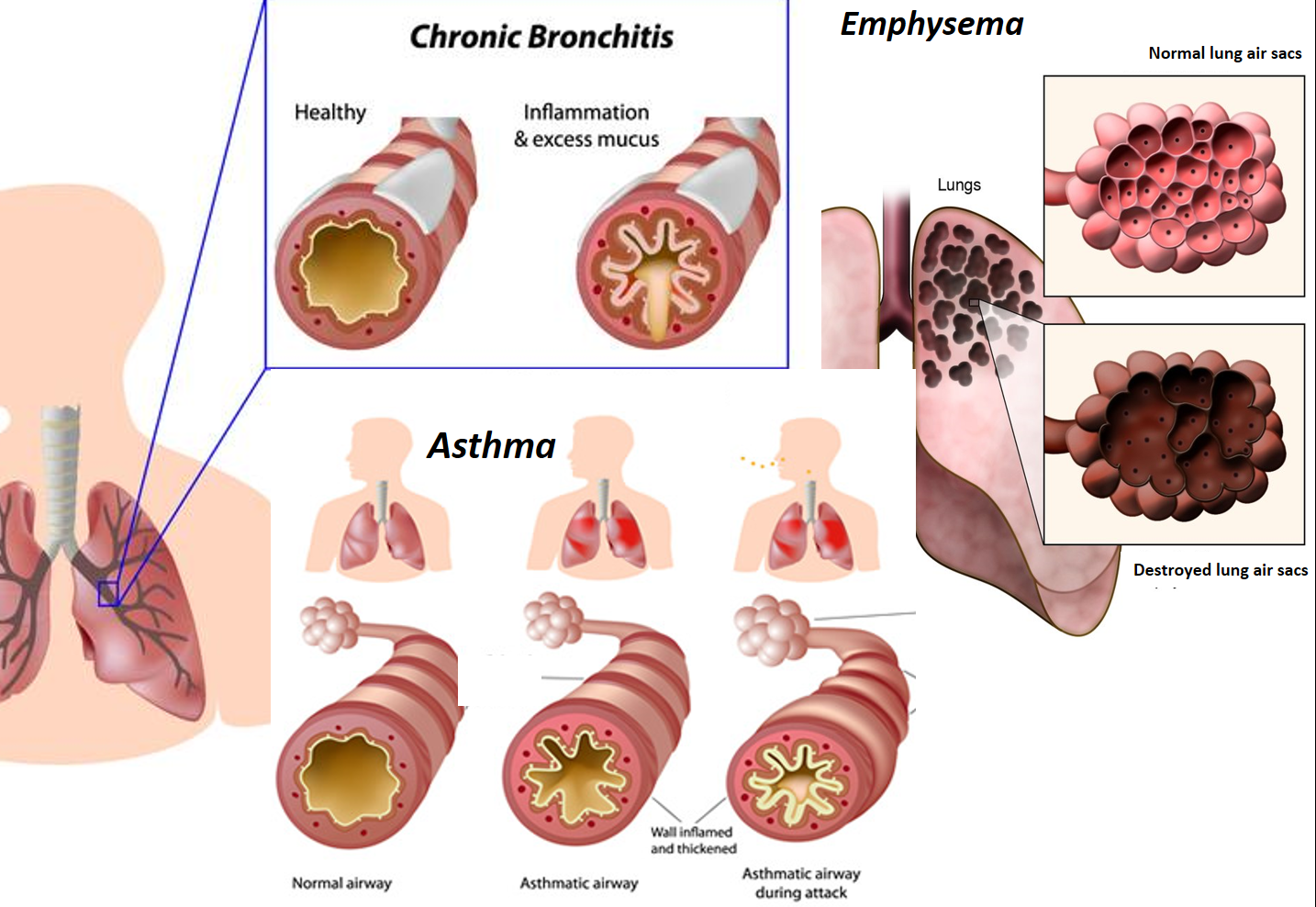 Similarly, the patient should avoid breathing dust or chemical fumes. One way to protect your lungs is to use a face mask or respirator that covers your mouth and nose when working with any chemicals.
Similarly, the patient should avoid breathing dust or chemical fumes. One way to protect your lungs is to use a face mask or respirator that covers your mouth and nose when working with any chemicals.
Share:
The best doctors in St. Petersburg
Dedkova Olga Vladimirovna
Rating: 4.9 / 5
Enroll
Ilchishina Tatyana Alekseevna
Rating: 4.8 / 5
Enroll
Ablikova Marina Petrovna
Rating: 4.6 / 5
Enroll
Altunina Anna Viktorovna
Rating: 4.8 / 5
Enroll
Arefieva Alena Andreevna
Rating: 4.7 / 5
Enroll
Ashirova Consuelo Vladilenovna
Rating: 4.8 / 5
Enroll
Scientific sources:
- Myagkov, N.I. Chronic bronchitis / N.I. Myagkov, P.S. Nazar. – Kiev: Health, 1994. 150 p.
- Tyurin, E.I. Radiation diagnostics in assessing lung dysfunction in bronchial obstruction / E.I. Tyurin, V.I. Amosov, G.S. Amoashhy // Vestn.
 radiology. 1993. – No. 1. – P.37-40.
radiology. 1993. – No. 1. – P.37-40. - Balakhonova T.V. Ultrasound examination of arteries in patients with cardiovascular diseases. Dissertation for the degree of Doctor of Science. honey. Sciences, M., 2002.
- Kuperberg E.B. Doppler ultrasound in the diagnosis of occlusive lesions of the arteries of the brain and lower extremities / E.B. Kuperberg. -M.: AO “Bioss”, 1996. 179 p.
- Alekhin M.N., Sedov V.P. Doppler echocardiography: Study guide; -M.: 1997. -80s.
Useful information
Lung hamartoma
What should be done to diagnose and treat lung hamartoma? To solve this problem, the first step for the patient is to make an appointment with a pulmonologist. After the initial examination, the doctor may prescribe additional studies:
CT scan of the chest
MRI of the lungs
Biopsy with histology.
read more +
Arteriovenous aneurysm of the lungs
What should be done to diagnose and treat an arteriovenous lung aneurysm? To solve this problem, the first step for the patient is to make an appointment with a pulmonologist.


 This noticeably facilitates breathing and improves the excretion of sputum;
This noticeably facilitates breathing and improves the excretion of sputum;
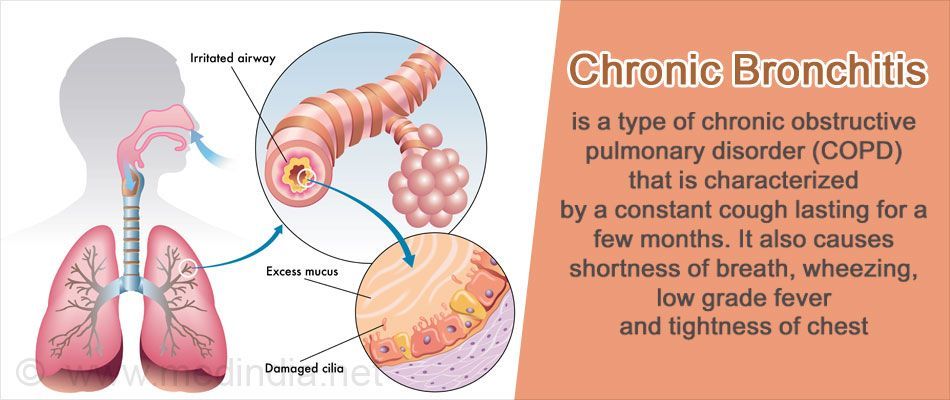
 This method, also called blood gas analysis, measures the amount of oxygen and carbon dioxide in the blood. The result allows the doctor to know how well the lungs are able to carry oxygen into the blood and remove carbon dioxide
This method, also called blood gas analysis, measures the amount of oxygen and carbon dioxide in the blood. The result allows the doctor to know how well the lungs are able to carry oxygen into the blood and remove carbon dioxide Exercise for at least 5 minutes a day, gradually increasing the duration and intensity of your workouts
Exercise for at least 5 minutes a day, gradually increasing the duration and intensity of your workouts radiology. 1993. – No. 1. – P.37-40.
radiology. 1993. – No. 1. – P.37-40.